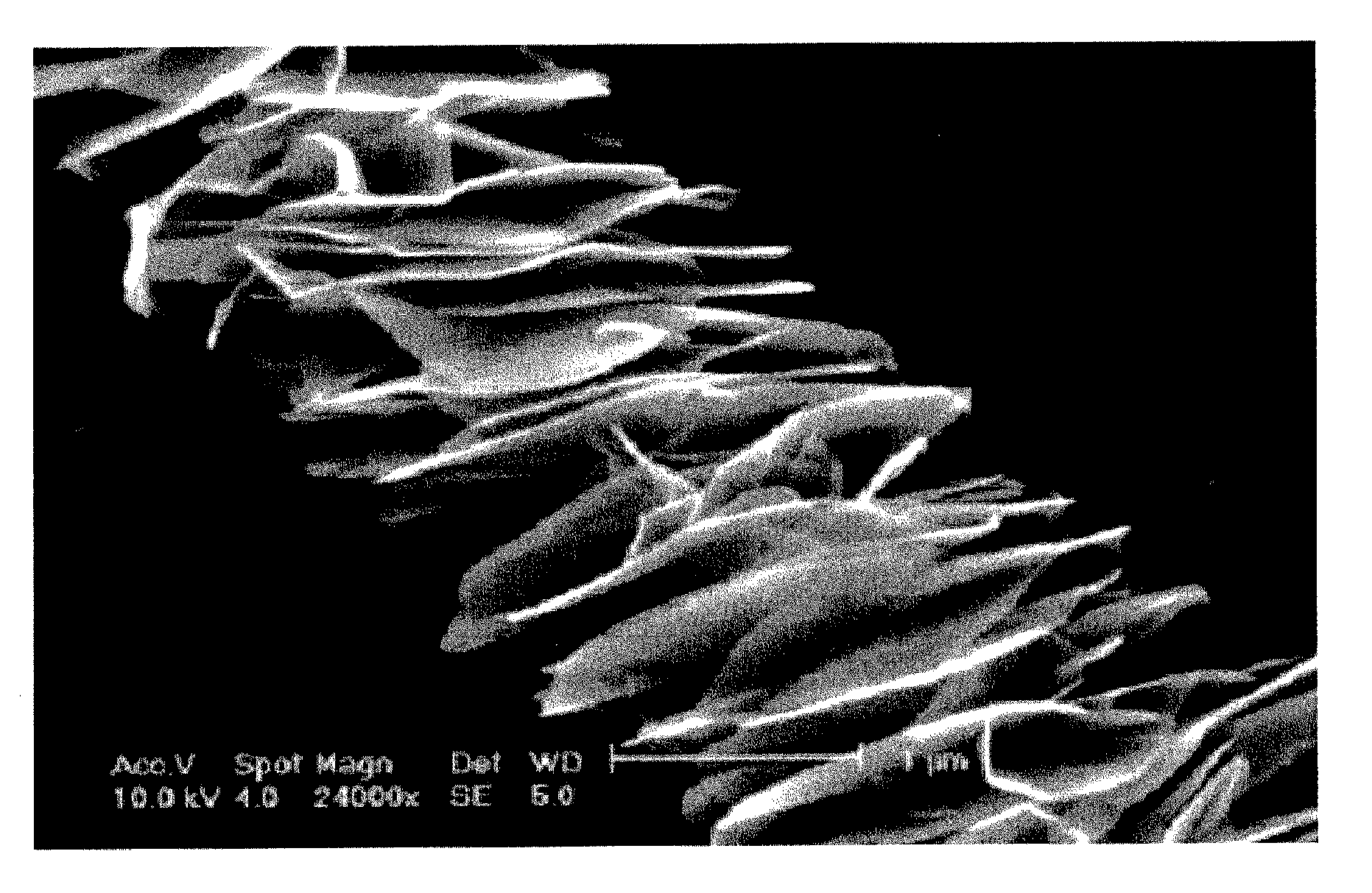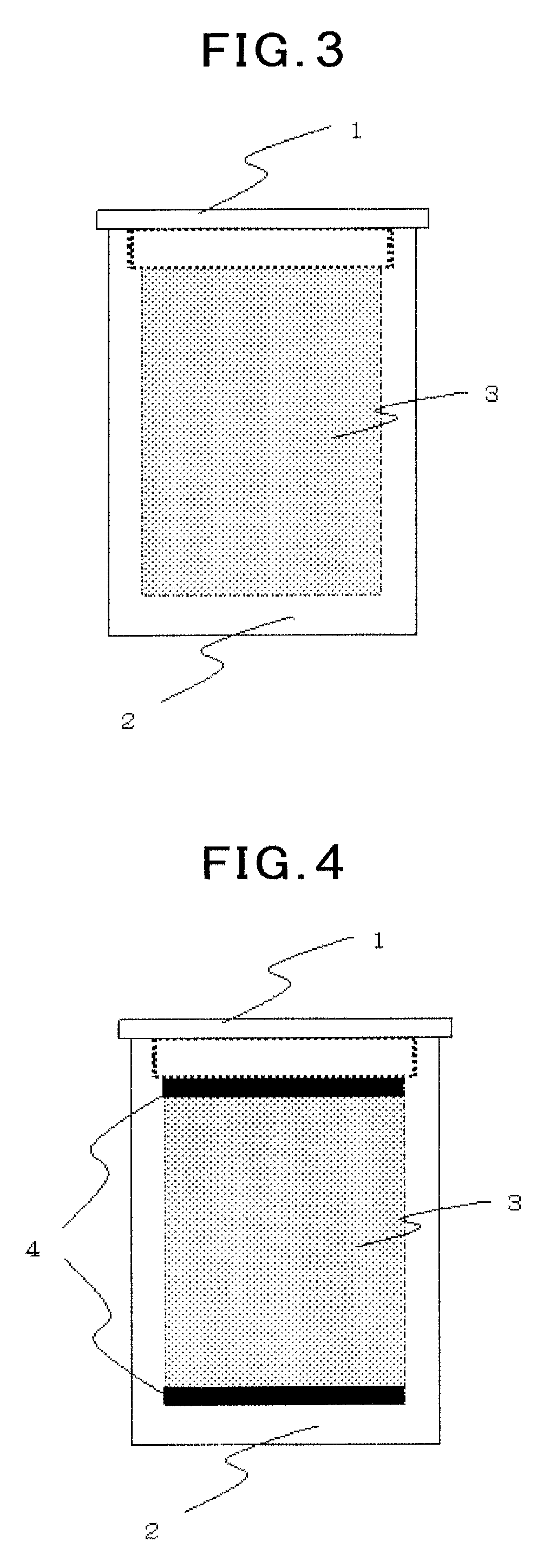Carbon material and method for producing same
a carbon material and carbon technology, applied in the direction of conductive materials, gel state, pressure/vacuum vessels, etc., can solve the problems of low hardness and hardness of graphite as compared with those of metallic materials, low hardness and hardness of graphite, and lack of mass production, etc., to achieve excellent crystallinity, high crystallinity, and hardly produced
- Summary
- Abstract
- Description
- Claims
- Application Information
AI Technical Summary
Benefits of technology
Problems solved by technology
Method used
Image
Examples
example 1
[0217]A powder of phenol-formaldehyde resin having an average particle size of 20 μm was pre-baked at each of maximum ultimate temperatures of 600° C., 700° C., 900° C. and 1000° C. under inert gas atmosphere. An amount of hydrogen remaining in the starting material after the pre-baking was analyzed in accordance with General Rules for Determination of Hydrogen in Metallic Materials (JIS Z 2614: 1990), and the results are shown in Table 1. The starting material pre-baked at each temperature was charged in a screw-capped (triangular screw) graphite crucible made of a material having a bulk density of 1.80 and an open pore ratio of 10%, and a threaded top cover was turned to be closed, and thus the crucible containing the pre-baked starting material was sealed. After charging the graphite crucible in hot isostatic pressing equipment, a temperature and pressure inside the equipment were increased to 600° C. and 70 MPa, respectively in one hour using argon gas, and thereafter, heating a...
example 2
[0221]A powder of phenol-formaldehyde resin having an average particle size of 500 μm was pre-baked at a maximum ultimate temperature of 600° C. under inert gas atmosphere. The pre-baked starting material was treated in the same manner as in Example 1 except that a maximum ultimate temperature during the hot isostatic pressing treatment was 1400° C. A period of time required from charging of the graphite crucible up to taking out thereof was 12 hours. An electron micrograph of the treated sample is shown in FIG. 22, and an expanded photograph of the surface thereof is shown in FIG. 23. Vapor-phase-grown graphite grown radially over the whole surfaces of the spherical particles was recognized, but a bulk structure comprising bonded particles was not obtained. A true density of the obtained sample was 1.80.
example 3
[0222]A waste PET beverage bottle was finely cut into an average particle size of about 200 μm (a size of the longest portion in a lengthwise and crosswise directions) and was pre-baked at a maximum ultimate temperature of 600° C. under inert gas atmosphere. The pre-baked starting material was pulverized into particles in a stainless steel mortar, and was then treated in the same manner as in Example 2. A period of time required from charging of the graphite crucible up to taking out thereof was 12 hours. An electron micrograph of the treated sample is shown in FIG. 24. Vapor-phase-grown graphite grown approximately radially over the whole surfaces of the irregular particles was recognized. A true density of the obtained sample was 1.90.
PUM
| Property | Measurement | Unit |
|---|---|---|
| temperature | aaaaa | aaaaa |
| temperature | aaaaa | aaaaa |
| temperature | aaaaa | aaaaa |
Abstract
Description
Claims
Application Information
 Login to View More
Login to View More - R&D
- Intellectual Property
- Life Sciences
- Materials
- Tech Scout
- Unparalleled Data Quality
- Higher Quality Content
- 60% Fewer Hallucinations
Browse by: Latest US Patents, China's latest patents, Technical Efficacy Thesaurus, Application Domain, Technology Topic, Popular Technical Reports.
© 2025 PatSnap. All rights reserved.Legal|Privacy policy|Modern Slavery Act Transparency Statement|Sitemap|About US| Contact US: help@patsnap.com



